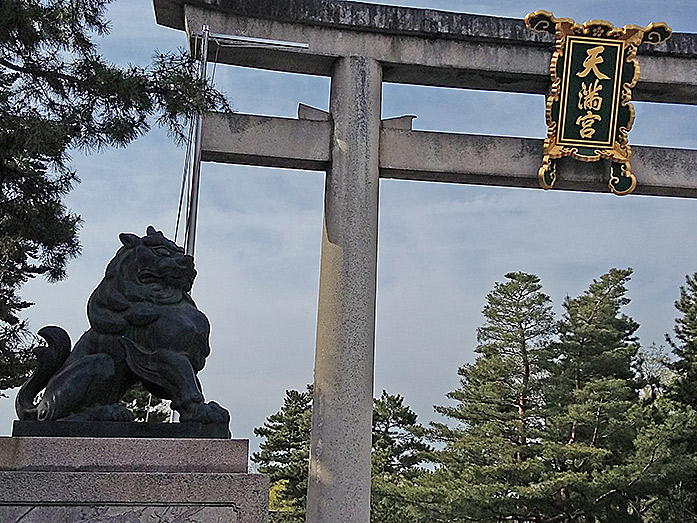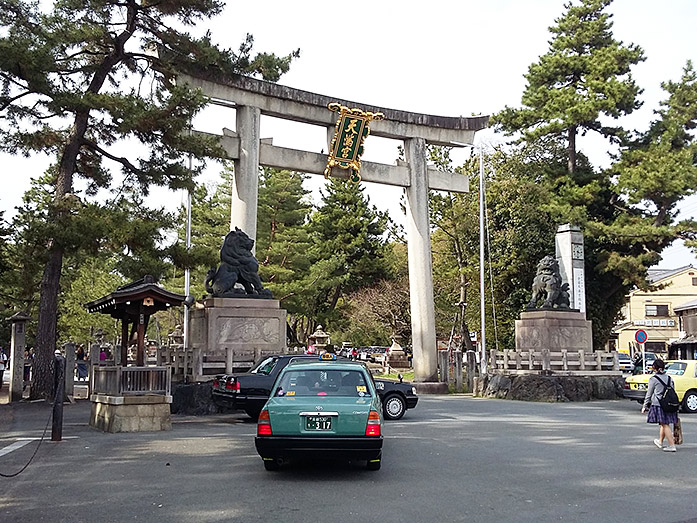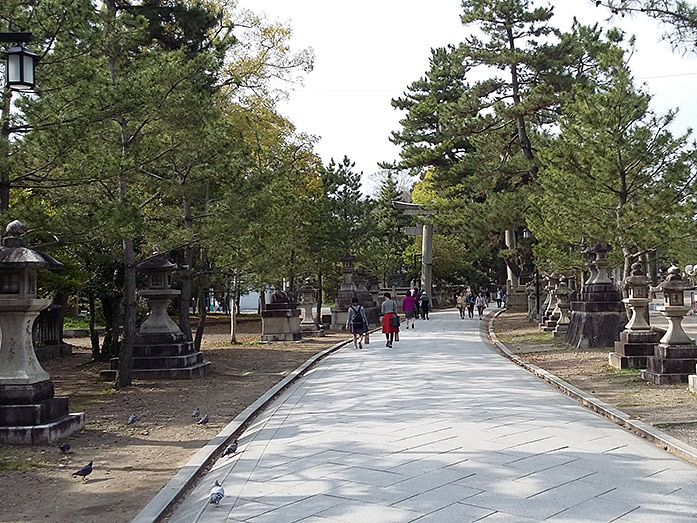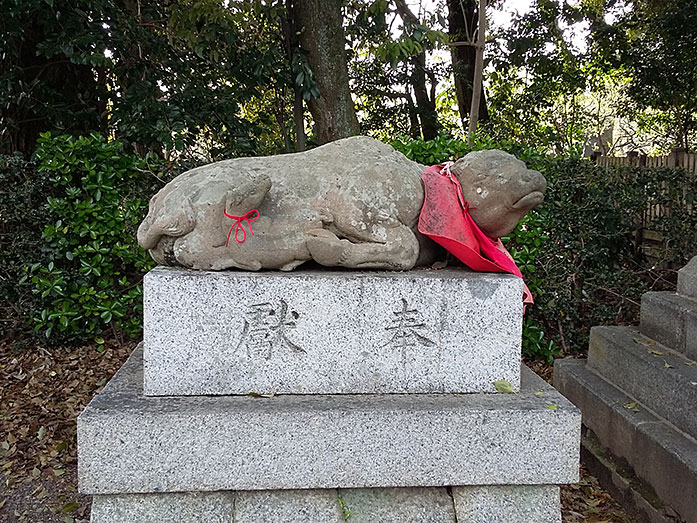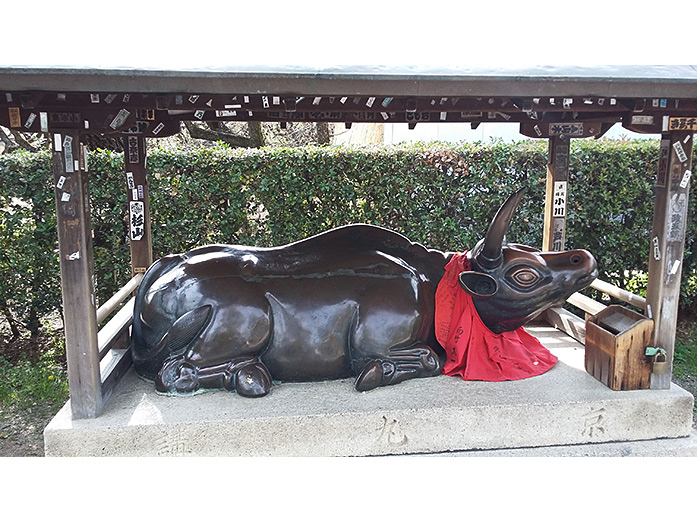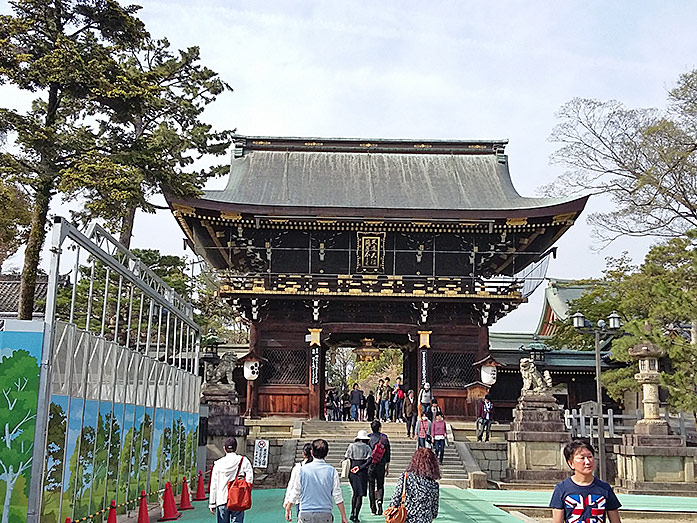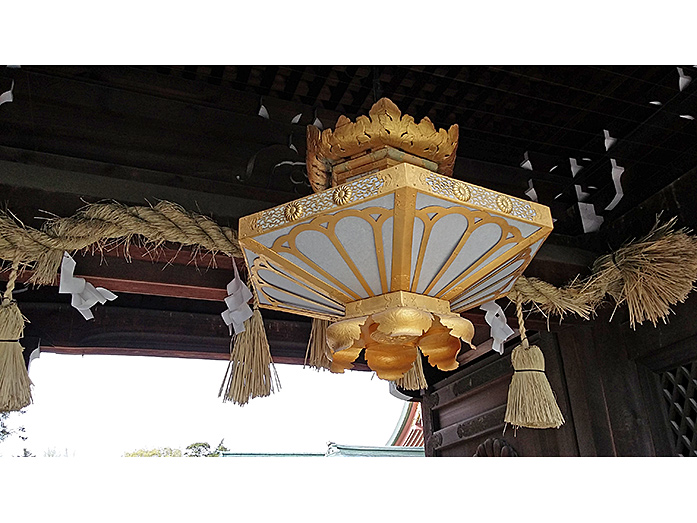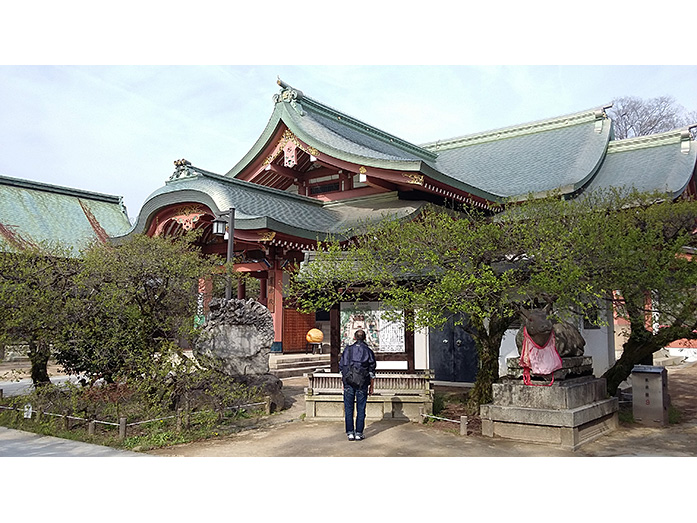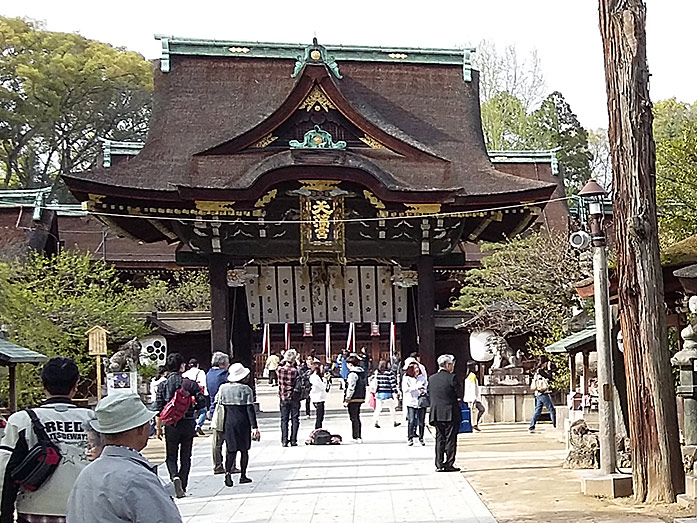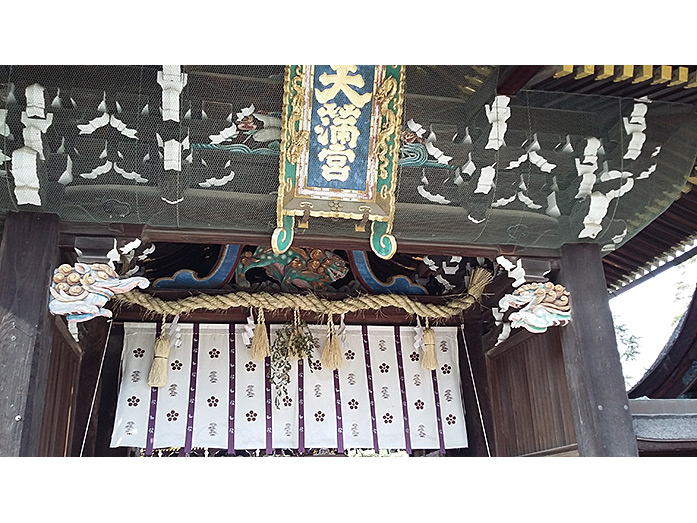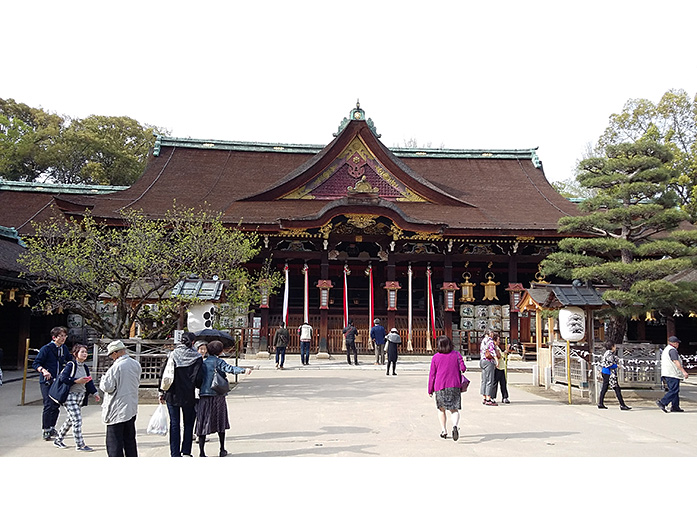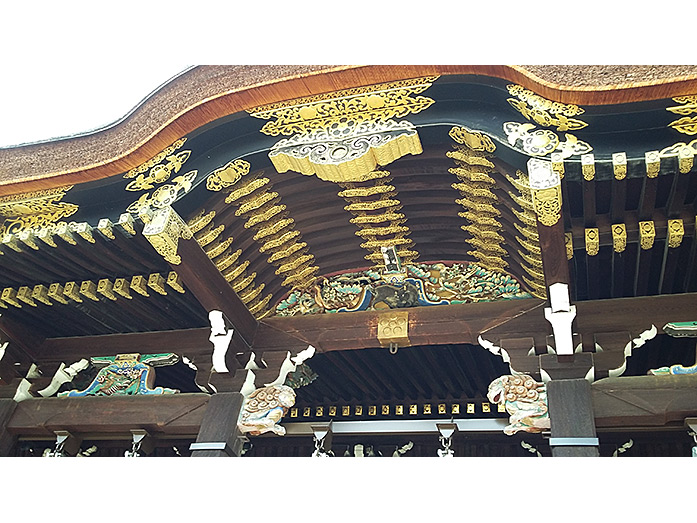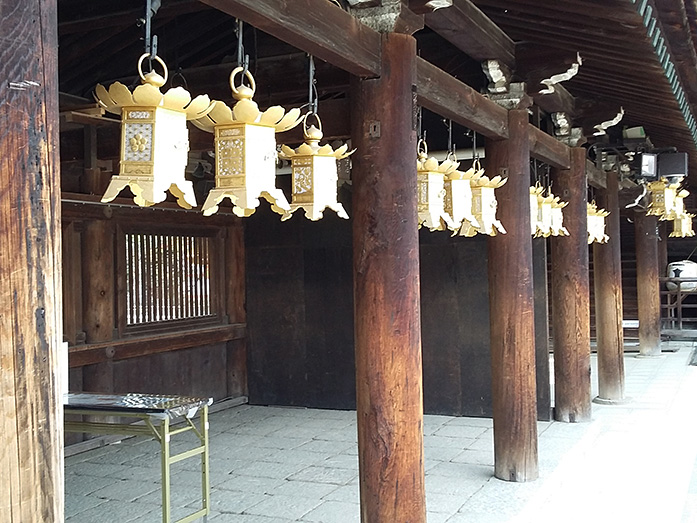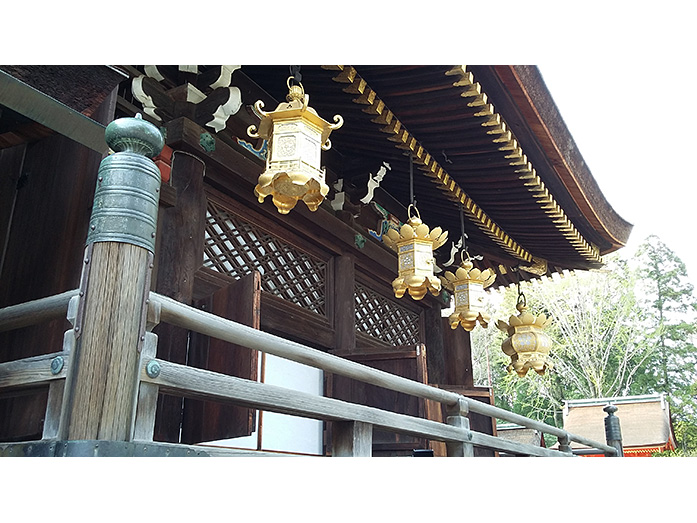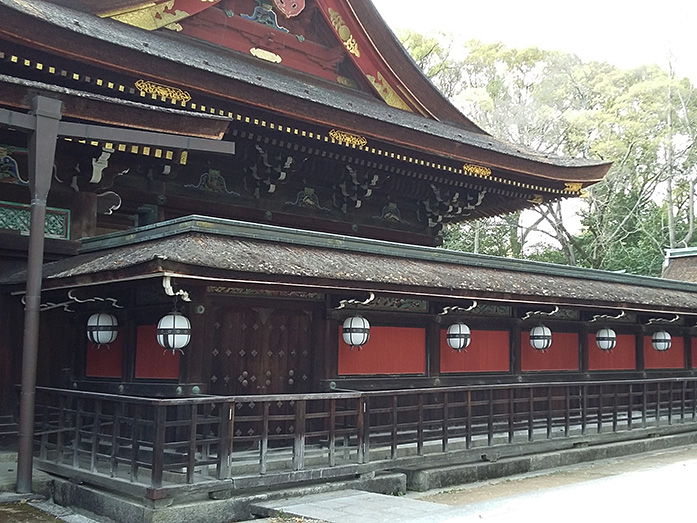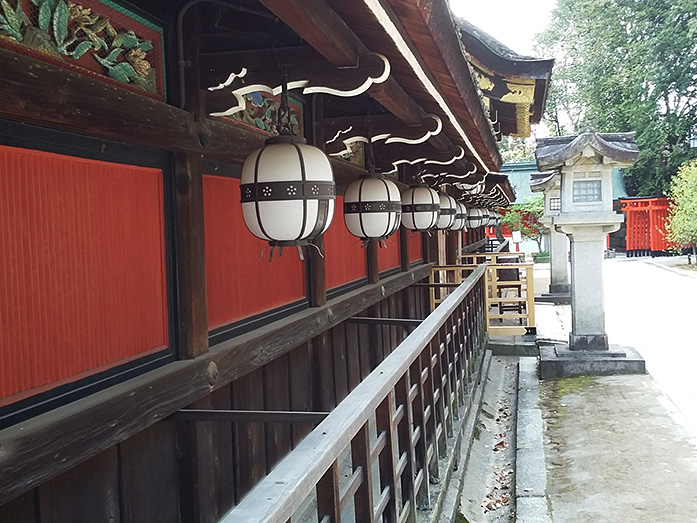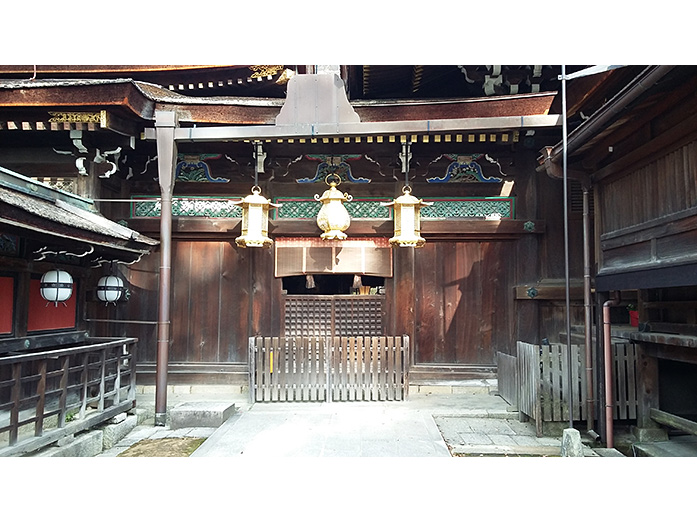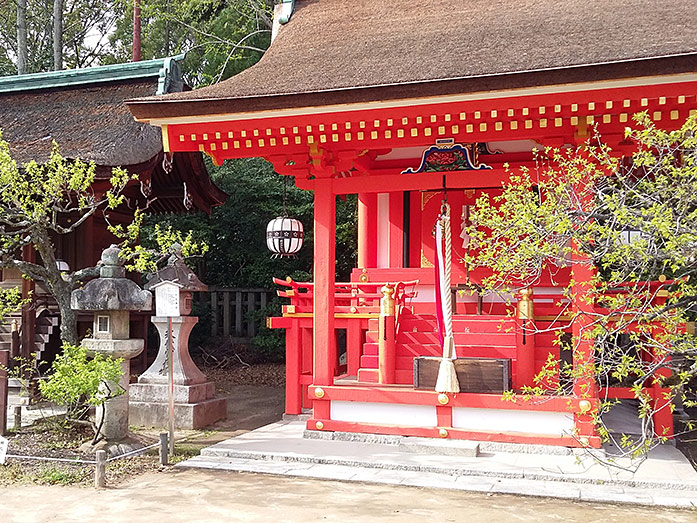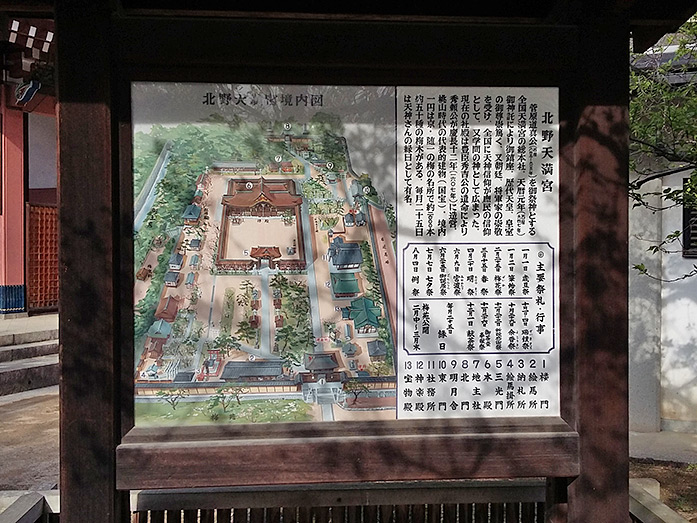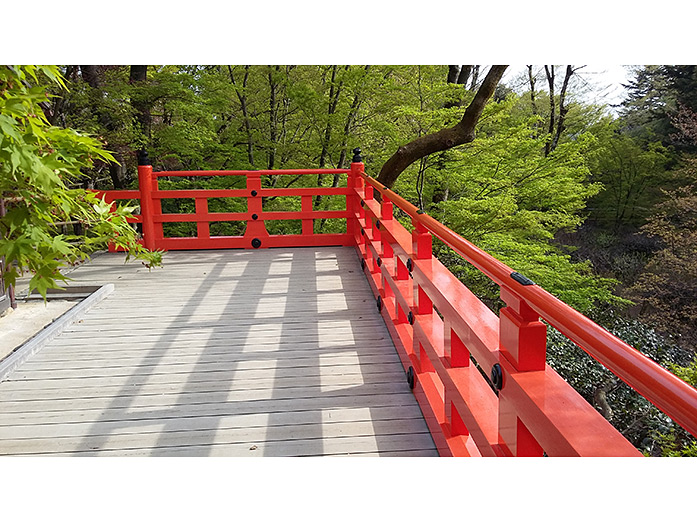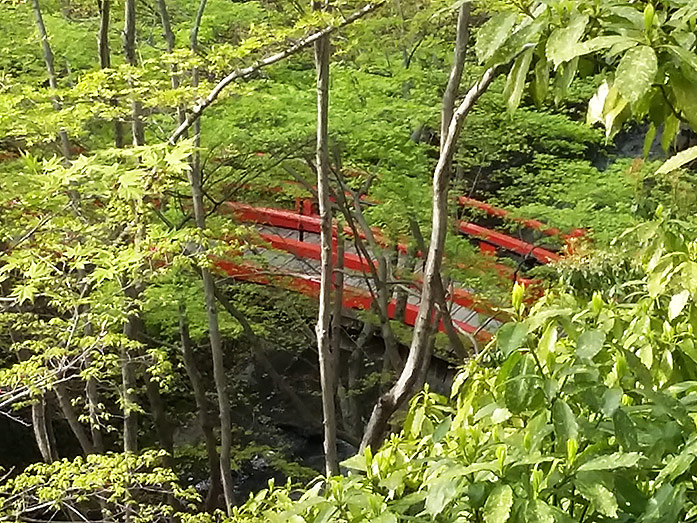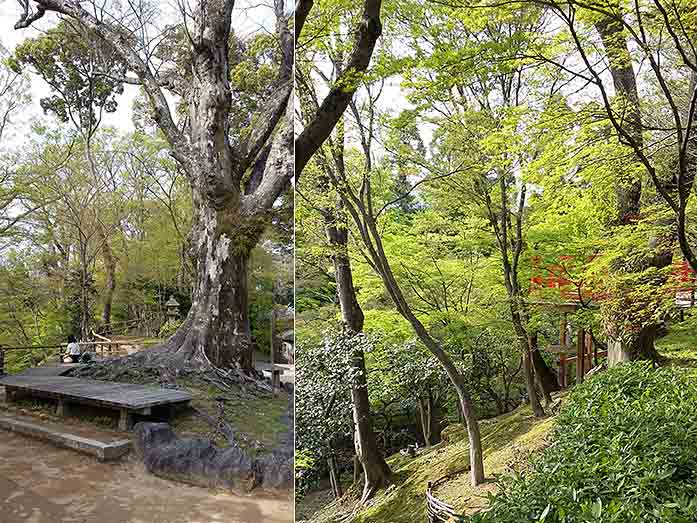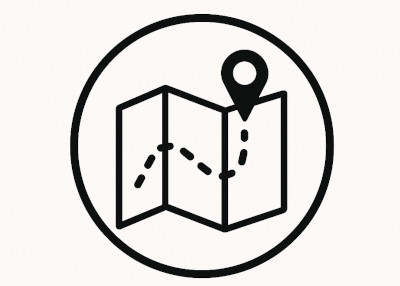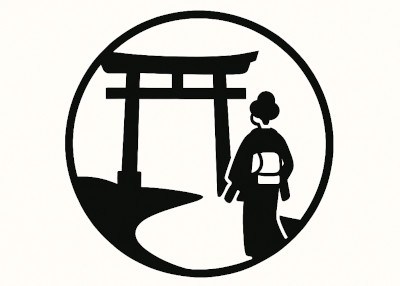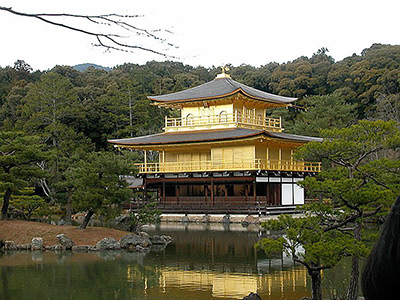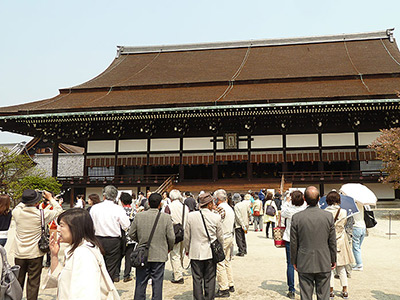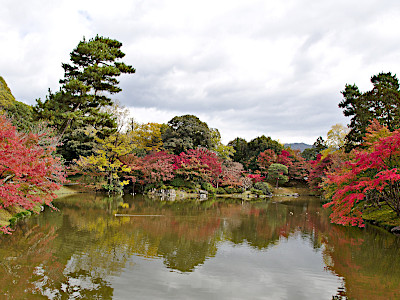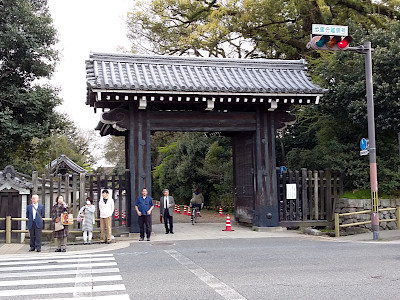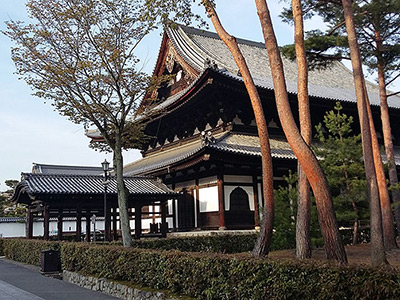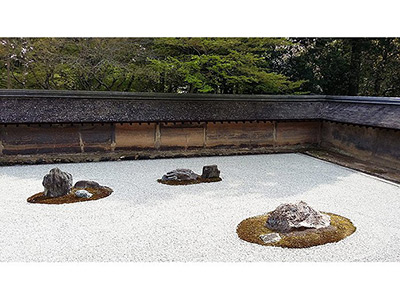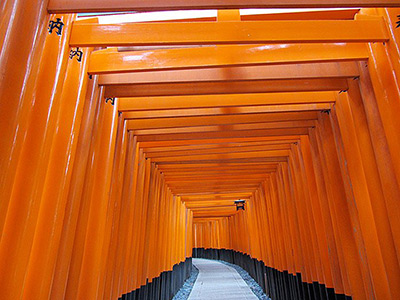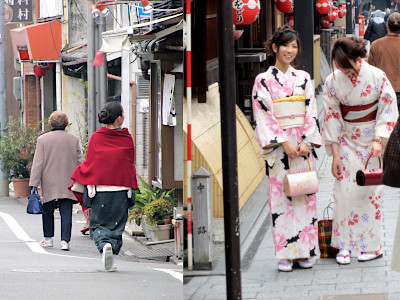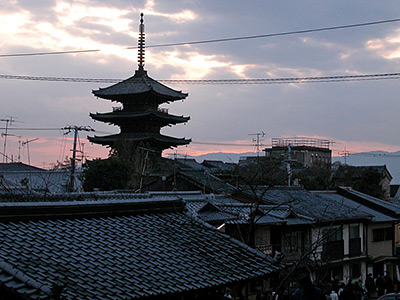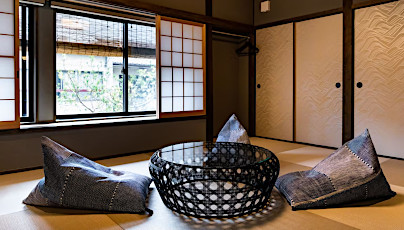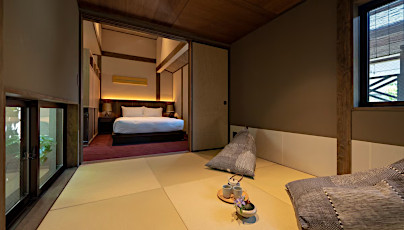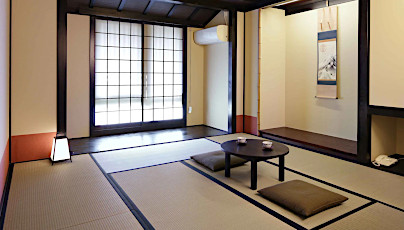Kitano Tenmangu Shrine in Kyoto
This post can contain affiliate links, which means that we may receive a small commission if you make a purchase using these links.
Facts & Figures
The beautiful Shinto shrine Kitano Tenmangu in the northwest of Kyoto near Kinkaku-ji (Golden Pavilion) is dedicated to the politician, poet, and scholar Sugawara no Michizane (845 - 903). All over Japan, there are approx. 12000 Tenmangu and Tenjin Shrines to honor Sugawara no Michizane, but Kitano Tenmangu is their head shrine. Kitano Tenmangu is with a history of over 1000 years one of the oldest and most important sanctuaries in Kyoto. The main gates and buildings were constructed in the Momoyama period style.
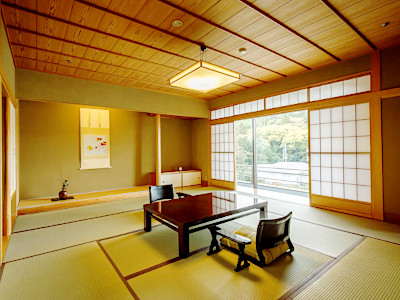 Best Places to Stay in Kyoto >
Many students visit the shrine to pray for success in examinations, because Sugawara no Michizane, also associated with Tenjin (god of learning), is their patron saint. Cattle are seen as the messengers (otsukai) of Tenjin, and statues can be found throughout the shrine grounds. It is said that once you rub the bronze cows at the entrance you will be successful in your high school or university entrance exams:) Thousands of students have done it so far. Let’s hope it worked out. What makes this place especially beautiful in spring are the nearly 2000 plum (ume) trees and over 50 different species, which bloom from February to late March. It is interesting to know that Sugawara no Michizane admired the beauty of plum trees. During autumn (November - Dec) you will witness the changing colors of maple leaves in the Odoi Maple Garden of the shrine. Do not miss the illumination of the 350 maple trees at night in November and the beginning of December.
Best Places to Stay in Kyoto >
Many students visit the shrine to pray for success in examinations, because Sugawara no Michizane, also associated with Tenjin (god of learning), is their patron saint. Cattle are seen as the messengers (otsukai) of Tenjin, and statues can be found throughout the shrine grounds. It is said that once you rub the bronze cows at the entrance you will be successful in your high school or university entrance exams:) Thousands of students have done it so far. Let’s hope it worked out. What makes this place especially beautiful in spring are the nearly 2000 plum (ume) trees and over 50 different species, which bloom from February to late March. It is interesting to know that Sugawara no Michizane admired the beauty of plum trees. During autumn (November - Dec) you will witness the changing colors of maple leaves in the Odoi Maple Garden of the shrine. Do not miss the illumination of the 350 maple trees at night in November and the beginning of December.
- Kitano Tenmangu:
- Opening Hours - 5:00 am to 6:00 pm (April till September)
- Opening Hours - 5:30 am to 5:30 pm (October till March)
- Closed - never, open the whole year
- Admission Fee - free
- Houmotsuden (Shrine Museum)/Treasure House:
- Opening Hours - 9:00 am to 4:00 pm, only on the 25th of every month
- Admission Fee - 1000 yen (Adults), 250 yen (Elementary school students), free (Preschool children)
- Plum garden:
- Opening Hours - 10:00 am to 4:00 pm (February to late March)
- Admission Fee - 700 yen (Adults), 350 yen (Children)
- Odoi Maple Garden:
- Opening Hours - 9:00 am to 4:00 pm (November to beginning of December)
- Admission Fee - 700 yen (Adults), 350 yen (Children)
- Opening Hours for tree illumination - from dusk till 8:00 pm (November to beginning of December)
- Admission Fee for tree illumination - 500 yen (Adults), 150 yen (Children)
History
Kitano Tenmangu Shrine was built in 947 to conciliate the spirit of Heian scholar, poet, and advisor Sugawara no Michizane (845 - 903). Michizane had been exiled for many years in Dazaifu, Kyushu. Never before in Japanese history was a real person enshrined as a deity (God of Academics). He was a brilliant man known for his deep knowledge of literature, martial arts, and culture. Later in life he became a politician and worked for the government in high positions. He had a major enemy in the Fujiwara clan and due to some political intrigues, he was exiled in 901. In 1607 the main shrine was built by Toyotomi Hideyori (1593 - 1615), son of daimyo Toyotomi Hideyoshi (1537 – 1598). The Sanko-mon and Ro-mon Gate were also constructed during that time. The architectural style of the Momoyama period (1574 - 1600) with its golden decoration is really unique. Kitano Tenmangu Shrine had the status of a second rank of government-supported shrines (Kanpei-chusha) from 1871 - 1946.
Location

Kitano Tenmangu Shrine is located within the Kamigyo Ward in Kyoto right next to the Kamishichiken (one of the five Geisha towns in the city).
Address: 931 Bakuro-cho, Kamigyo-ku, Kyoto, 602-8386
How to get to Kitano Tenmangu Shrine?
- 30min from Kyoto Station to Kitano Tenmangu by bus nr. 50 and 101
Sightseeing spots of the Kitano Tenmangu Shrine
Top:
Main Shrine - The building, where the deity is enshrined, is designated as a National Treasure by the Japanese government. The architectural style is called yatsumune-zukuri (multi-building construction), where the main shrine, the Ishi-no-Ma hall, and the worship hall are located under one large roof. The outstandingly beautiful wooden carvings at the hall were done by the famous artisan Hidari Jingoro (1594 - 1634).
Sanko-mon and Ro-mon Gate (two-storied structure) - Enjoy the golden decorations, the amazing craftsmanship, and the details of these gates. Both were constructed in 1607 and date back to the Momoyama period.
Sanko-mon (Gate of Three Lights) - The inner gate brings you to the main hall.
Kitano Tenmangu plum tree garden (Bai-en) - The garden is open to the public during the blossom season (February till March).
Treasure House - The house also known as Houmotsuden (Shrine Museum) is only open on the 25th of every month. On display are tools for tea ceremonies, maki-e lacquer artworks, old historical documents, swords (Onigirimaru), suits of armor, folding screens, picture scrolls like the national treasure - Illustrated Scroll of the Origin of Kitano Tenjin - and many more items donated by worshippers.
Odoi Maple Garden - This historical site with the vermilion-lacquered Uguisu-bashi bridge is known for its famous autumn foliage and is a very popular spot for locals and tourists.
Festival & Events in Kyoto (dates can change without notice)
every month
Tenjin-san - Flea Market at Kitano Tenmangu temple grounds (25th)
The very popular flea market with over 1000 stalls offers a huge variety of products like kimono fabrics, silver jewelry, antiques, plants, and much more. Enjoy the atmosphere and the good food there. The place is open from 6:00 am to 9:00 pm. In the evening 250 hanging lanterns and 350 stone lanterns are lit to create an amazing scenery. Learn more about the three biggest flea markets in Kyoto.
February
Plum Blossom Festival at Kitano Tenmangu temple grounds (25th)
This festival has been held for over 900 years to remember the death of Sugawara no Michizane. Enjoy the open-air tea ceremony (Baikasai) presented by maiko and geiko from the nearby Kamishichiken Geisha district.
April
Miyako Odori (1st - 31th)
The traditional annual spring dance of the Kyoto district Gion Kobu performed by Geiko and Maiko is a must-see on your Kyoto visit. Don't miss the most popular dances the Miyako Odori "Cherry Blossom Dances" or "Dances of the Old Capital" at the Gion Kobu Kaburenjo Theater (located close to Gion Corner).
May
Aoi Matsuri (15th)
The highlight of this festival is a large parade from the Imperial Palace through the Shimogamo Shrine to the Kamigamo Shrine. More than 500 people wearing aristocratic costumes from the Heian Period (794 - 1185). The Aoi Matsuri belongs with the Gion Matsuri and Jidai Matsuri as the three most famous festivals in Kyoto.
July
Gion Matsuri (whole month)
The month of July is full of different events like the Yoiyama - Kyoto's Magical Night (locals in kimonos look at the giant Gion floats the day before the parade) or the famous Yamaboko Junko (float procession on the 17th of July).
August
Kitano Matsuri (4th)
It is amazing that this traditional festival started in 987.
October
Zuiki Matsuri (1st till 5th)
The five-day-long festival has a history of over 1000 years. The famous procession of portable floats (omikoshi) starts at the Kitano Tenmangu Shrine on the first day.
The reason for the festival is to say thank you to the Kitano Tenmangu deity for a successful harvest.
Jidai Matsuri ("Festival of Ages") (22nd)
People celebrate with a large parade between Imperial Palace to Heian Shrine the anniversary of the foundation of Kyoto. App. 2000 participants wearing historical costumes from different time periods. Enjoy this great festival which lasts around 2 hours.
November
Evening illumination of Odoi Maple Garden (11th of Nov. - 3rd of Dec.)
The Odoi Maple Garden is open until 8:00 pm for a fee of 1200 yen (including tea and sweets) per person. The beautiful scenery is a must-see for every Kyoto visitor.
Where to stay in Kyoto?
Book your Flight Tickets and Rental Car for your Japan trip
Day trips from Kyoto:
Travelers who viewed Kitano Tenmangu Shrine viewed also:
Top rated - Best Machiya Houses in Kyoto
THE MACHIYA Ebisuya, 192 Ebisuya-cho Shimogyo-ku, Kyoto 600-8062
This 3-star guesthouse got an excellent rating. All 30 individually furnished rooms offer free WiFi, air conditioning, bathrooms incl. toilets, fridges, 40-inch flat-screen TVs, and more. THE MACHIYA Ebisuya is located in central Kyoto.
View on Expedia.com
This 3-star guesthouse got an excellent rating. All 30 individually furnished rooms offer free WiFi, air conditioning, bathrooms incl. toilets, fridges, 40-inch flat-screen TVs, and more. THE MACHIYA Ebisuya is located in central Kyoto.
View on Expedia.com
The Machiya Kazahaya, 570-6 Kazahayacho, Shimogyo-ku, Kyoto, Kyoto, 600-8475
The Machiya Kazahaya offers for all guest rooms free WiFi, air conditioning, safes, bathrooms with toilets, refrigerators, and much more. Enjoy also the beautiful Japanese Garden. Guests gave this property the rating - Exceptional.
View on Expedia.com
The Machiya Kazahaya offers for all guest rooms free WiFi, air conditioning, safes, bathrooms with toilets, refrigerators, and much more. Enjoy also the beautiful Japanese Garden. Guests gave this property the rating - Exceptional.
View on Expedia.com
Kyomachiya Ryokan Sakura Urushitei, 425 Kichimonjicho, Shimogyo-ku, Kyoto, 600-8069
This beautiful 3-star guesthouse offers 32 rooms with free WiFi, air conditioning, bathrooms incl. showers and toilets, refrigerators, and much more. Enjoy also the relaxing indoor public bath (no minerals). Guests gave this property the rating - Wonderful.
View on Expedia.com
This beautiful 3-star guesthouse offers 32 rooms with free WiFi, air conditioning, bathrooms incl. showers and toilets, refrigerators, and much more. Enjoy also the relaxing indoor public bath (no minerals). Guests gave this property the rating - Wonderful.
View on Expedia.com

